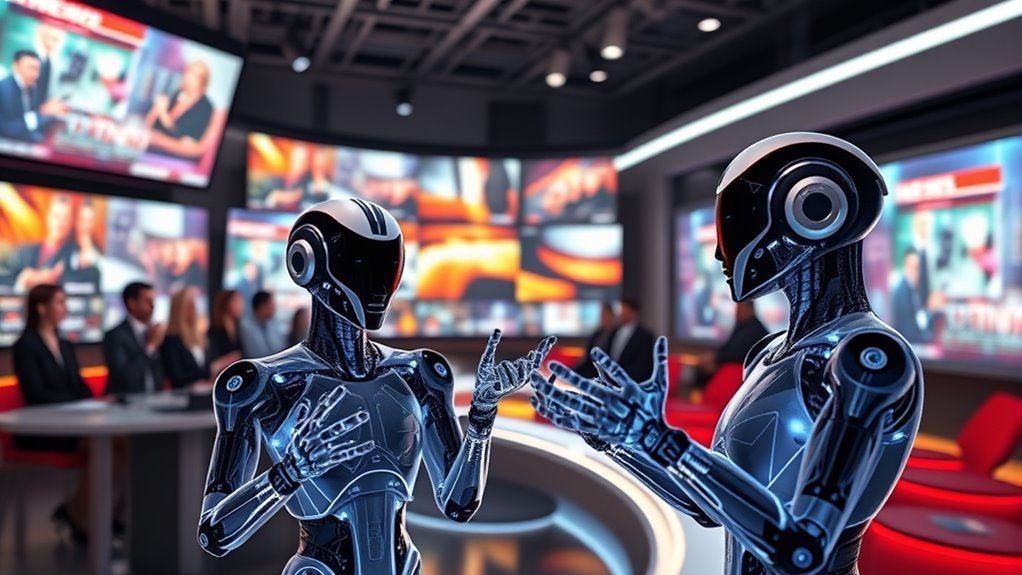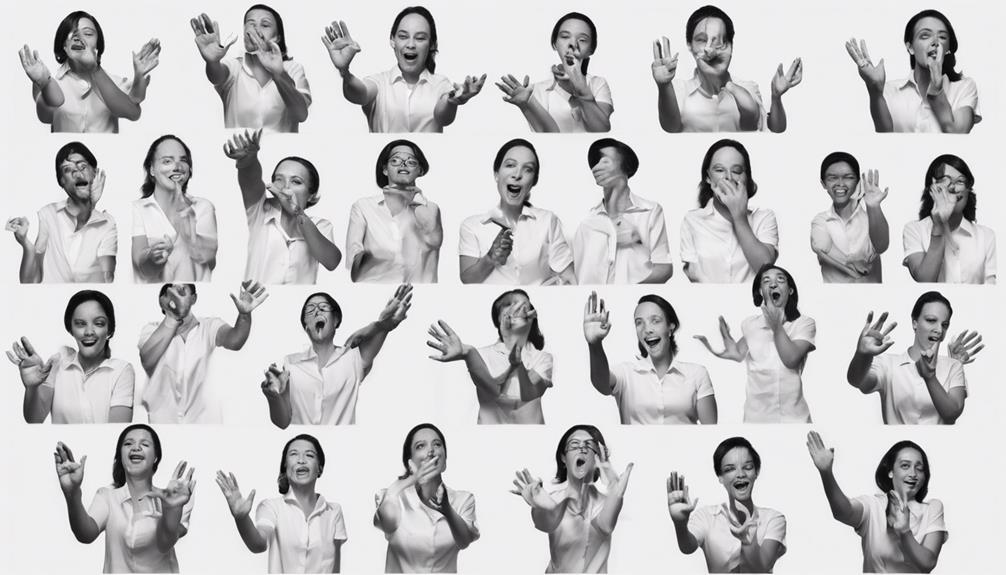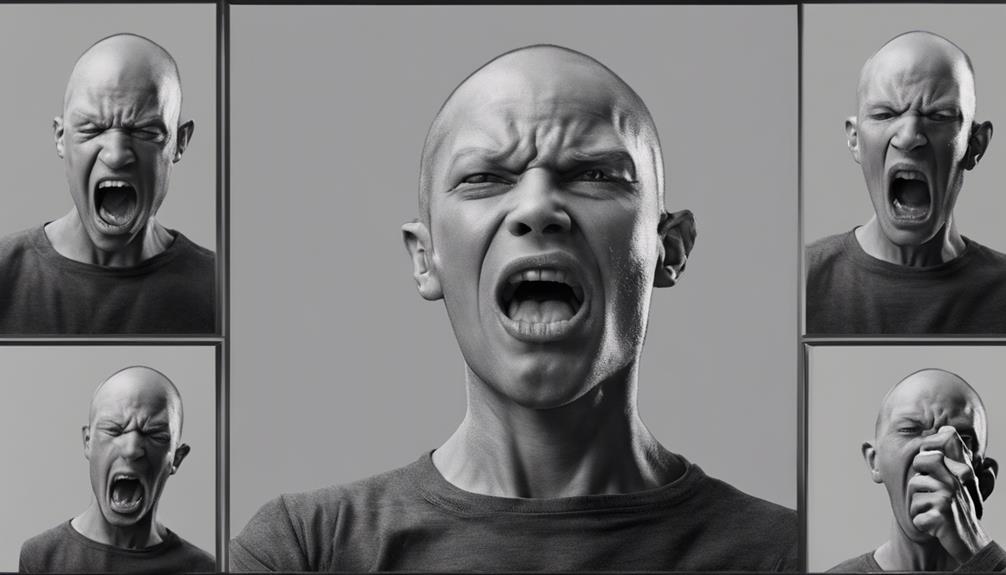AI avatars translating news into sign language are constantly improving to deliver more accurate, natural gestures that closely mirror real sign language. By refining these movements, they help you better understand and trust the information, creating a seamless experience for viewers. As technology advances, avatars adapt to regional dialects, making sign language more inclusive and authentic. If you keep exploring, you’ll discover how these innovations are shaping accessible news for everyone.
Key Takeaways
- AI avatars utilize advanced gesture recognition to accurately translate news content into sign language.
- Precise gesture modeling ensures natural, fluid signing that enhances message clarity and emotional expression.
- Continuous technological improvements adapt avatars to regional sign language dialects for better inclusivity.
- High gesture fidelity fosters trust and engagement among deaf audiences by providing reliable, real-time news access.
- Behind-the-scenes, developers refine avatar movements to make sign language translations more human-like and accessible.

Have you ever wondered how news reaches deaf and hard-of-hearing audiences? It’s a question that’s become increasingly relevant as technology advances. AI avatars translating news into sign language are changing the game, but behind the screens, there’s a lot happening to guarantee these translations are effective. One of the key factors is gesture accuracy. When an AI avatar signs, it must do so with precise movements that mirror natural sign language. This precision isn’t just about correctness; it’s about clarity. If gestures are off or awkward, viewers might misinterpret the message or become confused. That’s why developers put considerable effort into refining gesture accuracy, making sure every movement is intentional, fluid, and representative of the original spoken content. Accurate gestures help preserve the nuance and emotion of the news, allowing viewers to connect more deeply with the material. When gesture accuracy is high, user engagement naturally increases because the audience feels more confident in what they’re watching. They’re more likely to trust the translation and stay tuned in, knowing they’re receiving a faithful representation of the news. That trust is essential for news organizations aiming to serve deaf communities effectively. Plus, better gesture accuracy reduces cognitive load; viewers don’t have to work as hard to interpret signs, which makes the experience smoother and more enjoyable. It’s about providing access without frustration. As AI avatars become more sophisticated, they adapt to different sign language dialects and regional variations, further improving gesture accuracy and user engagement. These improvements make the experience feel more natural and less robotic, helping viewers feel like they’re interacting with a fellow human rather than a machine. The goal is to create a seamless, inclusive experience where deaf and hard-of-hearing audiences get real-time news updates without barriers. The better the gesture accuracy, the more authentic and relatable the avatar appears, fostering trust and ongoing engagement. This technological evolution isn’t just about accessibility; it’s about empowering communities and giving everyone the chance to stay informed. Developers are constantly fine-tuning their models to enhance gesture accuracy, knowing that even small improvements can greatly impact user engagement. When audiences see signs that are precise and natural, they’re more likely to pay attention, absorb information, and feel connected to the news. In the end, AI avatars translating news into sign language aren’t just a technological feat—they’re a bridge that brings people closer to the information they need, with gesture accuracy playing an essential role in making that bridge reliable and inviting.
Frequently Asked Questions
How Do AI Avatars Ensure Cultural Sensitivity in Sign Language?
You might wonder how AI avatars promote cultural sensitivity in sign language. They do this by being programmed to recognize cultural nuances and gesture variations specific to different sign language communities. These avatars utilize extensive data and machine learning to adapt gestures precisely, respecting diverse cultural contexts. This ensures that the translations are respectful and authentic, fostering better understanding and inclusion for sign language users worldwide.
What Are the Cost Implications of Implementing AI Sign Translation?
Thinking about the cost analysis for AI sign translation, you’ll find it’s an investment worth considering. While initial setup and technology costs might seem like a gentle financial nudge, ongoing maintenance and updates are part of the journey. Budget considerations are essential, but the improved accessibility and inclusivity you gain can make it a valuable addition. Ultimately, it’s about balancing costs with the positive impact on your community.
How Do AI Avatars Handle Complex or Abstract News Concepts?
You wonder how AI avatars handle complex or abstract news concepts. They analyze emotional nuance and metaphor interpretation to convey meaning effectively. Advanced algorithms help them grasp subtle tones and symbolic language, translating these into sign language that captures the message’s essence. While not perfect, ongoing improvements aim to make AI avatars better at expressing the depth and nuance of intricate ideas, ensuring viewers understand both literal and emotional content behind the news.
Are AI Avatars Accessible to People With All Types of Disabilities?
Imagine a world where every person, no matter their abilities, can access news seamlessly. AI avatars aim to break accessibility barriers, but they aren’t perfect yet. You can customize user settings to better suit your needs, making content more understandable. Still, gaps remain for some disabilities. As technology advances, you’ll likely see more inclusive features, helping everyone stay informed and connected without obstacles.
What Are the Future Developments Expected in AI Sign Language Translation?
You can expect future AI sign language translation to improve with multi modal interfaces, integrating visual, audio, and text inputs for smoother communication. Advances will focus on achieving real time accuracy, so your conversations become more natural and seamless. These developments will make technology more accessible, ensuring you can communicate effortlessly across different environments. As AI evolves, it will become increasingly reliable, helping bridge gaps and promote inclusivity for everyone.
Conclusion
As you watch these AI avatars bring news to life through sign language, you realize the future is unfolding faster than a flying car in 2050. They bridge gaps, making info accessible to everyone, no matter where you are. Just like the first telegraph revolutionized communication, these digital signers are transforming how we connect. So, stay tuned—you’re witnessing a new chapter in storytelling, where screens become the bridge to understanding, blending old dreams with cutting-edge tech.











